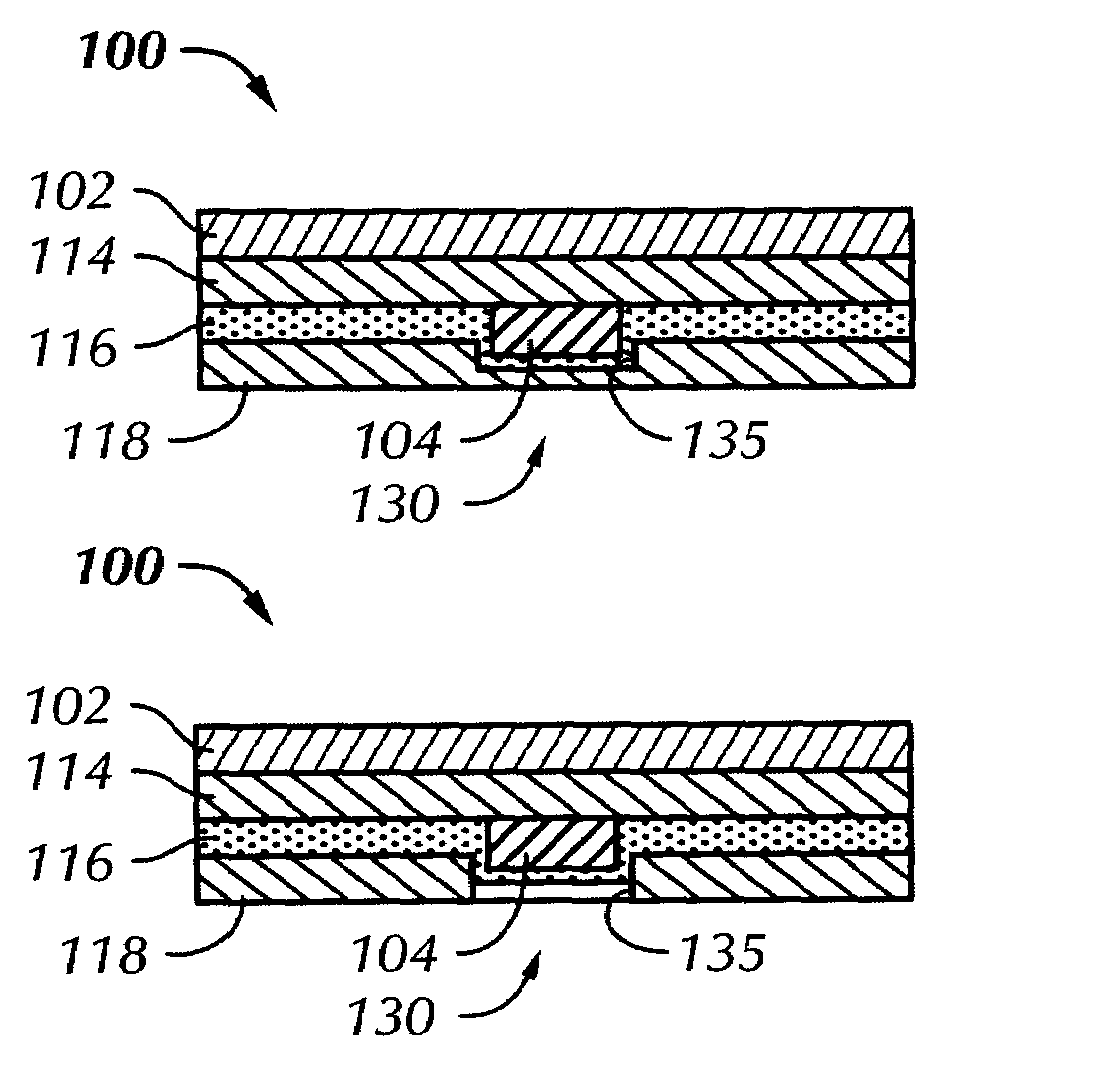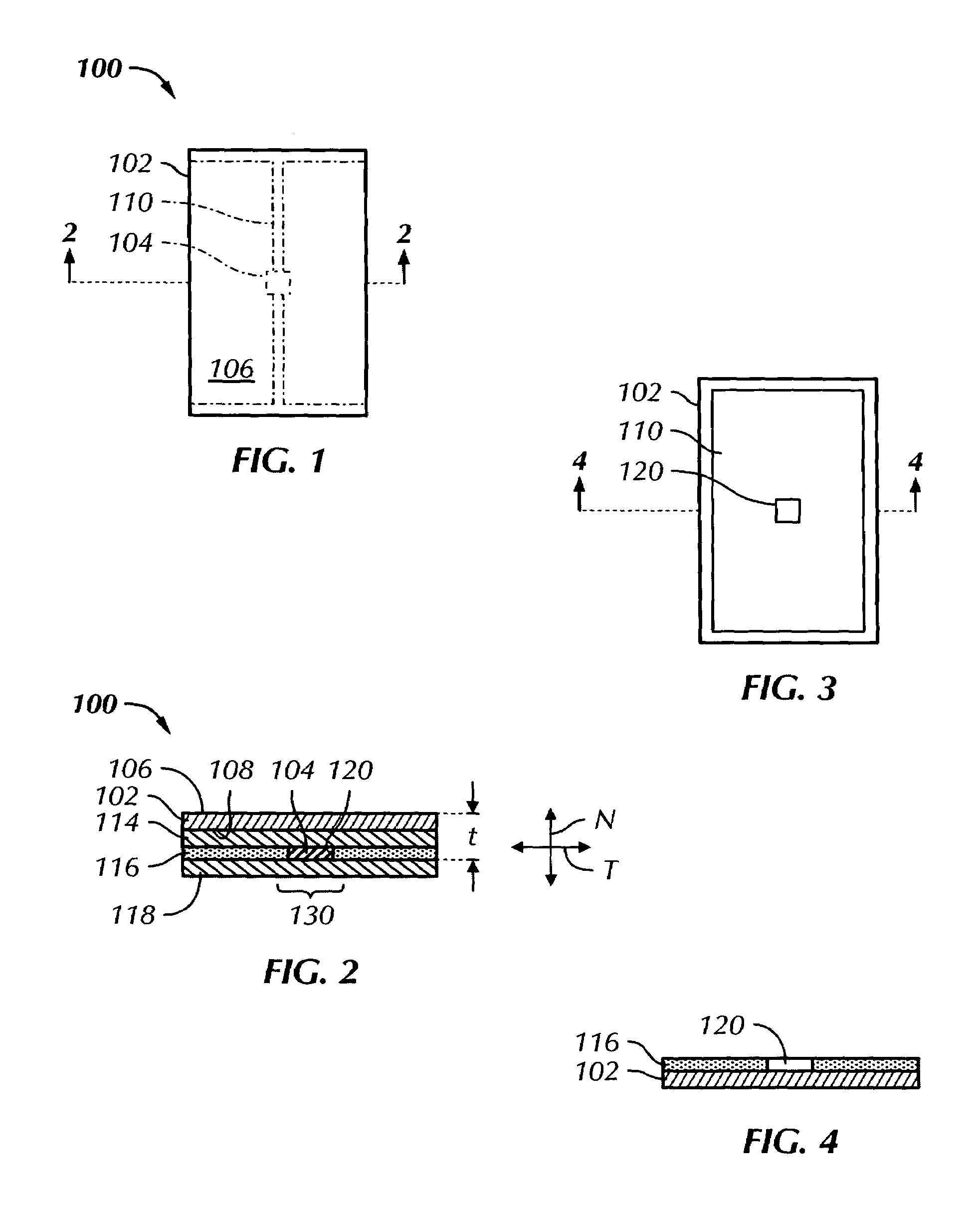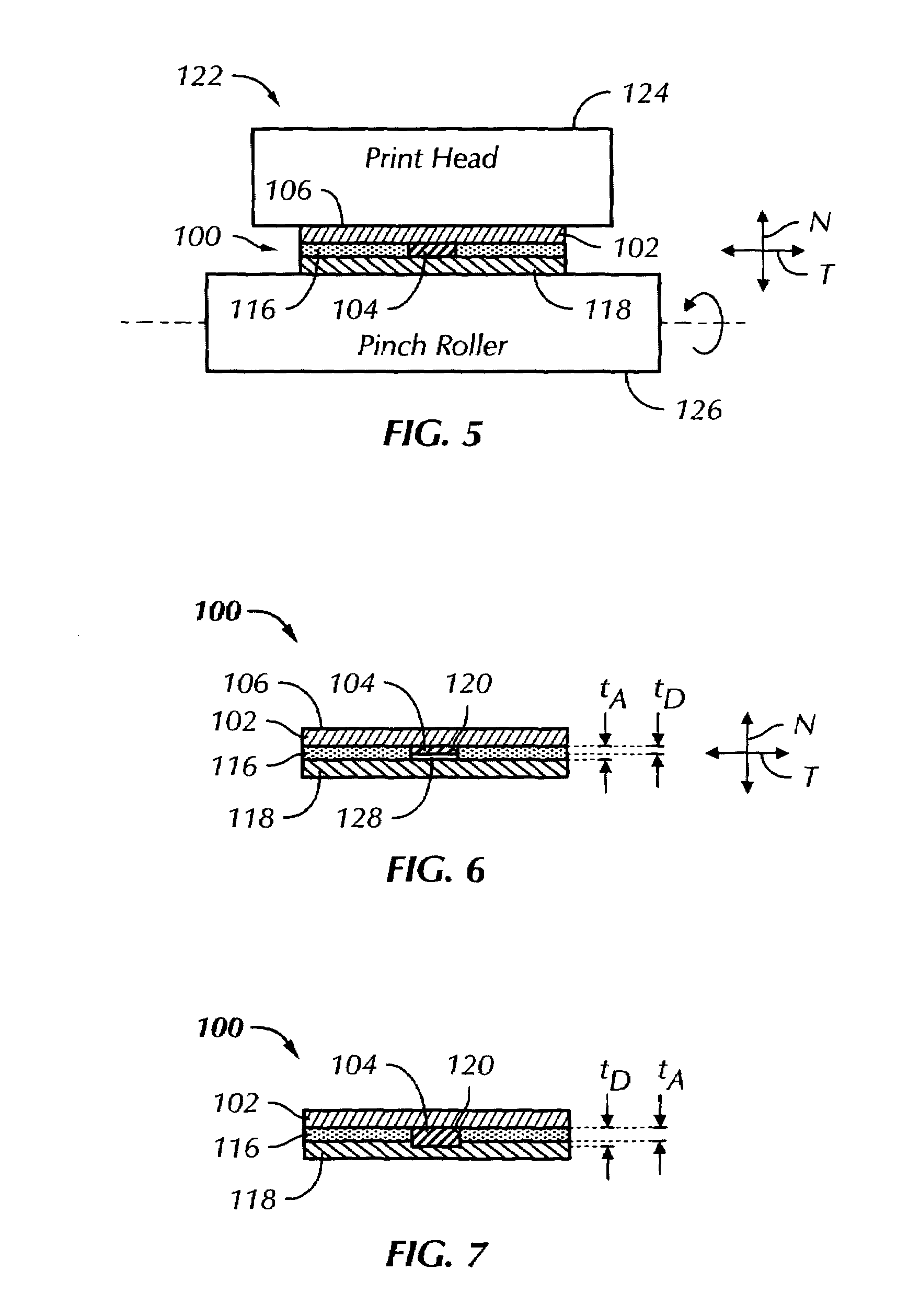RFID tag that provides a flat print area and a pinch roller that enables the same
a technology of rfid tags and pinch rollers, applied in the direction of digital output to print units, instruments, digital computer details, etc., can solve the problems of reducing the life of the print head, printing distortion, and less than optimal printing, and achieve the effect of reliable printing and efficient printing
- Summary
- Abstract
- Description
- Claims
- Application Information
AI Technical Summary
Benefits of technology
Problems solved by technology
Method used
Image
Examples
Embodiment Construction
[0026]Referring more particularly to FIGS. 1 and 2 of the drawings, a radio-frequency identification (RFID) tag 100 includes a face stock 102 and an RFID device 104. The face stock 102 may be described as having a printable side or surface 106 and an inlay side or surface 108. The RFID device 104 is mounted to or disposed on the inlay side 108 of the face stock 102 and may include any type of RFID structure, including chips, straps, power source (for active devices), and connecting structure for coupling with an antenna 110, as known in the art.
[0027]The face stock 102 may include an inlay substrate 114, such as a layer of polyethylene terephthalate (PET), applied to the inlay side 108 on which the RFID device 104 (such as a microchip) and the antenna 110 may be disposed. In addition, a layer of adhesive 116, such as a pressure sensitive adhesive (PSA), may be coated on the inlay side 108 of the face stock 102, and a liner 118 may be releasably adhered to the layer of adhesive 116.
[...
PUM
 Login to View More
Login to View More Abstract
Description
Claims
Application Information
 Login to View More
Login to View More - R&D
- Intellectual Property
- Life Sciences
- Materials
- Tech Scout
- Unparalleled Data Quality
- Higher Quality Content
- 60% Fewer Hallucinations
Browse by: Latest US Patents, China's latest patents, Technical Efficacy Thesaurus, Application Domain, Technology Topic, Popular Technical Reports.
© 2025 PatSnap. All rights reserved.Legal|Privacy policy|Modern Slavery Act Transparency Statement|Sitemap|About US| Contact US: help@patsnap.com



